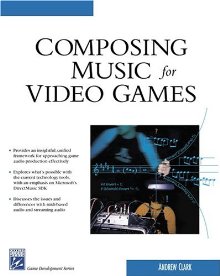Composing Music for Video Games

Ficha básica
Clasificación temática
Otros campos
Incluye CD-ROM
SUMARIO. Part I: Introduction // Chapter 1: Why is Video Game Music So Hard to Compose? / Chapter 2: What Exactly is the Problem Here / Chapter 3: Moving Towards Solutions // Part II: The Problem Space / Chapter 4: What is Adaptive Music? / Chapter 5: Characteristics of Adaptive Music Systems // Part III: The Music Domain / Chapter 6: Conventional Musical Structures / Chapter 7: How Well Do These Structures Adapt? / Chapter 8: Gestures / Chapter 9: The Rule of Three: Basic Musical Responses // Part IV: Responding to Game Events / Chapter 10: Types of Events / Chapter 11: The Basic Reflexive Relationship / Chapter 12: Situational Musical Awareness / Chapter 13: Situational Game Awareness / Chapter 14: Giving Control to the Ears // Part V: Responding to Game Contexts / Chapter 15: Moving Beyond Reflex / Chapter 16: Experience/Prediction/Planning / Chapter 17: Wagging the Dog // Part VI: Responding to Musical Contexts / Chapter 18: Musical Intelligence / Chapter 19: Extending Material / Chapter 20: Structural Generation // Part VII: Process and Design / Chapter 21: Approaching a New Project / Chapter 22: Adaptive Scoring Techniques / Chapter 23: Best Practices // Part VIII: Adaptive Audio Tools / Chapter 24: Custom Tools / Chapter 25: In-House Toolkits / Chapter 26: Useful Toolkits You Can Actually Get / Chapter 27: Moving Towards a General Solution // References // About the CD-ROM
